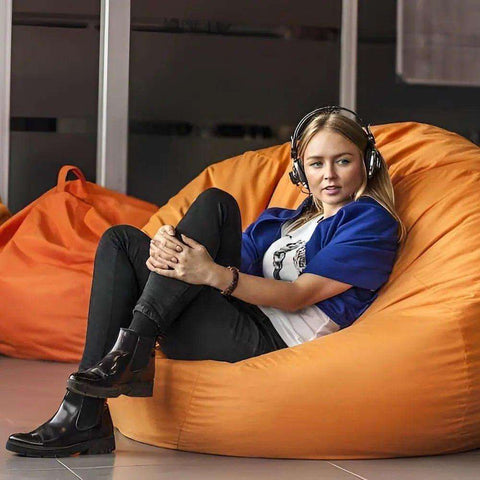Work is stressful enough as it is. Click here for 14 ways to create a relaxing work environment and increase productivity.
Did you know that 76 per cent of Americans say workplace stressors negatively impact their personal relationships? Or that 66 per cent report losing sleep due to work-related tensions? Even more alarming, 16 per cent have quit jobs because the stress became unbearable, with some seeking less stressful jobs or considering a career change to reduce work-related stress. These statistics highlight a growing crisis—work-related stress in the workplace is on the rise. Workplace stress has been identified by organisations like the World Health Organisation as a significant issue. Stress costs U.S. businesses an estimated $300 billion annually due to decreased productivity and absenteeism. Now more than ever, creating a stress-free work environment isn’t just a luxury; it’s a necessity for employee well-being and retention.
Since most of us aren’t in a position to quit working, we need to find ways to minimise our stress levels. One of the easiest ways to do this? By promoting a stress-free work environment. Flexible work hours and remote work options can significantly reduce employee stress, offering a better work-life balance. Does the thought of getting your work desk organised make your cortisol levels spike further? Then, it’s time for a workspace makeover. And believe us, the temporary stress you feel will quickly subside into a sense of accomplishment. Here are 14 tips to promote better working conditions and reduce stress.
Introduction: Why a Stress-Free Work Environment Matters
Creating a stress-free work environment is more important than ever in today’s fast-paced world. Workplace stress isn’t just a minor inconvenience—it’s a significant source of chronic stress, anxiety, and emotional exhaustion for employees. A stressful work environment can quickly lead to decreased job satisfaction, higher turnover rates, and a drop in productivity. On the other hand, a stress-free work environment can have a profoundly positive impact on employee health, boosting morale and fostering a more positive atmosphere throughout the workplace.
When employers prioritise stress management and employee well-being, everyone benefits. Employees feel more supported, engaged, and motivated to perform at their best. Simple steps, such as identifying sources of stress, encouraging regular breaks, and fostering open communication, can make a significant difference. By implementing these strategies, employers can create a positive work culture that not only reduces stress levels but also enhances productivity and job satisfaction. Ultimately, creating a stress-free work environment is an investment in both employee health and the long-term success of the organisation.
Understanding the Impact of Stress on Productivity
Stress doesn’t just affect how employees feel—it has a direct impact on productivity and performance. When stress levels rise, it becomes harder to focus, motivation drops, and job satisfaction can quickly dwindle. Chronic stress can lead to emotional exhaustion and even burnout, making it challenging for employees to fulfil their tasks and responsibilities. Over time, excessive stress can also take a toll on physical health, contributing to issues like high blood pressure and anxiety, and even affecting job security if employees feel too overwhelmed to perform effectively.
To manage stress and maintain a productive work environment, employers can take proactive steps, such as offering professional counselling, encouraging physical activity, and ensuring employees take regular breaks. These stress management strategies help reduce stress, support mental health, and create a stress-free work environment where employees can thrive. By focusing on well-being and providing the right resources, employers can help employees stay focused, healthy, and productive—regardless of how busy the workday becomes.
Create a Stress-Free Work Environment
1. Tame that Space
Have you ever walked into a disorganised colleague’s workspace and felt utterly overwhelmed? Interactions with coworkers and their workspace habits can make you feel stressed, especially when clutter is involved. Perhaps you didn’t know where to sit or put down your pencil for fear of upsetting a pile of papers or files? Maybe you’re feeling stressed out just thinking about it? There’s nothing more stress-inducing than clutter. And even if you think you’re a neat-freak, subtle piles of clutter can still upset your workplace mojo. So, straighten up and remove the clutter. This includes everything from an oversupply of kitschy decorations to Post-it notes lining your desk. Space is a beautiful thing that you need to embrace at work by decluttering.
2. Get Personal
Let's face it. Whether you're a standard employee or a freelancer, you spend a large amount of your day at work. If your workplace stresses you out or makes you feel disconnected, try adding personal touches to make it feel more welcoming. From photographs to decorative accessories, inspiring artwork to books, these little touches will turn your workspace from sterile to stimulating. The items you add to your desk or cubicle should hold personal significance to produce the best results.
3. Green Up Your Space
Numerous studies point to the restorative power of open, green spaces. A simple walk in the woods or a park can lift your mood and improve your immune system. In fact, “Ecotherapy” proves to be one of the most effective ways to deal with stress. Encouraging exercise and healthy living, such as taking short walks or engaging in stretching exercises, can also improve employee moods by increasing endorphin production. Making healthy choices at work—like taking regular breaks, eating nutritious snacks, and practicing self care—supports overall well-being and helps reduce stress. So, why not green up your workspace with a few plants? Not only will integrating them into your environment look attractive, but they are shown to lower blood pressure, increase positive feelings, and reduce stress.
4. Take Mini Relaxation Sessions
Another positive way to combat stress? By incorporating relaxation exercises into your daily work routine. If permitted, play soft music while seated at your desk. Here we offer some interesting meditation tips. When you take breaks, make sure they're active. That means enjoying a few moments to stretch at your desk or while standing. Or, if the weather permits, head outside for a brisk walk and a healthy dose of sunshine.
5. Feng Shui Your Office Space
Feng shui, an ancient Chinese practice of placement, also offers ways to create a more harmonious and productive workspace. Start by placing your desk in the power position so that you can see people entering your office. If you're unable to do this, consider adding a mirror above your desk to view the entryway to your space. You should also consider a desk shape and layout that fosters productivity. The best layout? An L-shaped desk or table setup with a swivel chair.
6. Colour Makeover
Something as simple as changing the colour scheme in your workspace could lead to ramped-up energy and a happier outlook. Choose colours wisely (where possible) to enhance your mood at work. For example, neutral tones have a calming effect, while yellows tend to lead to increased energy and intellectual activity. Earth tones promote warmth and have a grounding vibe. Greens and blues create a sense of coolness and tranquillity. Consider adding a blue bean bag for the coolest vibe.
7. Change the Lighting in Your Workspace
Few factors prove more energy-sapping and stress-inducing than exposure to fluorescent light bulbs. They can harm your eyes, upset your natural biorhythms, and make you feel sick. Heck, they can even trigger a low-grade headache. If possible, open the windows in your office and let the sun's rays illuminate your room. Replace your bulbs with those that mimic ambient lighting. You'll be amazed by the impact these subtle changes have on your mood and vibe.
8. Create a Fun, Functional Corner
If possible, dedicate a corner of your workspace to creativity and innovation. This could be where you physically relocate for brainstorming sessions, to hold informal meetings with colleagues, or even to unwind briefly. Fill the space with a couple of bean bag chairs, poufs, or ottomans in colours corresponding to their designated function. For example, green or blue for an office oasis. Or, yellow to get the creative juices flowing. Along with an area rug, craft an instant conversation or chill space that’s both comfortable and unique. Changing your physical location in a room can have a huge impact on what you’re thinking and feeling. Well-designed workplaces can help workers reduce stress and improve well-being by providing supportive environments that address their needs. So, make your designated quirky conversation or sacred relax zone a spot to reboot and leave behind the stresses of the day. Check out how to improve staff productivity
Open Communication in the Workplace
Open communication is a cornerstone of any stress-free work environment. When employees feel comfortable voicing their concerns, sharing ideas, and asking questions, it creates a culture of trust and support. Employers can foster open communication by holding regular team meetings, providing constructive feedback, and encouraging employees to speak up about any challenges they’re facing. This not only helps reduce stress levels but also increases positive feelings and overall well-being in the workplace.
By making open communication a priority, employers can quickly identify sources of stress and address them before they escalate into larger issues. Employees who feel heard and valued are more likely to be engaged, motivated, and satisfied with their work. Creating a supportive environment where everyone feels comfortable sharing their thoughts is a powerful way to reduce stress and build a truly stress-free work environment.
9. Silence Apps
Life in the Digital Age comes with numerous conveniences and even more distractions and interruptions, like app notifications. These can disrupt your train of thought, lead to issues with time management, and increase stress levels. Promoting open communication in the workplace can also help reduce stress by allowing employees to share their concerns and feel heard. But this is an easy fix. Anytime you're completing an urgent task, go into silent mode. This goes for chat rooms and your phone. Avoid having multiple windows open to minimise distractions. That means closing all social media sites and applications that could interrupt your current activity. That way, you can drill down and complete the task at hand with full concentration.
10. Summarise What's Important
Amid a busy day, it's easy to lose track of what was said in a morning meeting or phone call. Even when you take notes. But that doesn't mean you should just give up or quit taking notes. Instead, you need to take a moment to write a quick summary based on those notes. Do this for meetings, phone calls, and other detail-oriented communications. The same applies to training sessions and any other situations where you need to retain a large amount of information. Make sure you develop a way to organise your notes and summaries, either on your laptop or printed out and filed away for easy access. Always opt for file names that are straightforward to locate.
11. Use Checklists Regularly
Checklists are a valuable tool that you should take advantage of. Not only do they help you stay prioritised, focused, and more productive, but they also let you keep track of your accomplishments. Use them to celebrate both small and big victories. Break up large problems into smaller, manageable pieces with checklists. In other words, use checklists to put projects in perspective while avoiding getting overwhelmed. Checklists also keep you on task when interruptions happen. And let's face it. They always do.
12. Schedule It
While checklists help you stay on track, using a calendar to create a schedule will take you to the next level. Why? Because it lets you organize the tasks you need to complete in a visual, linear format bounded by time constraints. Providing effective training programs can also empower employees, helping them feel more capable and reducing stress. This will help you better understand your limitations and areas where tasks are taking longer than they should. In other words, a schedule lets you come to terms with how long it takes you to complete what you need to do. Managing a heavy workload requires effective scheduling, and offering flexible hours can help employees balance their responsibilities and reduce stress. That way, you can schedule accordingly and develop a better sense of time management over the long term. You’ll gain a greater sense of control over your workday and how to optimise your productivity. You’ll also develop a sense of the pitfalls that keep you from completing tasks promptly.
13. Pencil in Breaks
With all this productivity in mind, it can be tempting to skimp on breaks. But, truth be told, the harder and more efficiently you work, the more you're going to need breaks. It's worth breaking down what a break should look like a bit further. Some people make the mistake of thinking this is the time to hop on social media, email, a chat, or a game to decompress. However, you need to distance yourself from electronics and take a break physically. Even if all you can spare are a couple of minutes to stand and stretch or walk around the room, you'll feel the immediate difference. This also represents a great opportunity to sit in the bean bag chair or ottoman and relax for a few minutes.
Prioritising Employee Well-Being
Putting employee well-being at the forefront is essential for creating a stress-free work environment. Employers can support well-being by offering access to mental health resources, such as professional counselling, and encouraging employees to take regular breaks throughout the day. Promoting a safe working environment and advocating for workplace wellness initiatives also play a key role in reducing stress levels and increasing positive feelings among employees.
Defining clear job expectations and providing the necessary resources helps employees feel secure and supported in their roles. By taking a holistic approach to well-being—addressing mental, physical, and emotional health—employers can create a positive, productive, and stress-free work environment. When employees know their well-being is a priority, they’re more likely to feel motivated, engaged, and ready to contribute to the organisation’s success.
14. Think Posture
When it comes to desk posture, find what works for you. Some people swear by working at a standing desk, while others want to work on a posture ball. There are also the merits of ergonomic chairs. While the research varies greatly when it comes to which one's best for posture and the spine, this also depends on the individual. Find what works for you and go with it. This might even involve splitting the difference by having an adjustable stand that allows you to either work sitting down or standing.
Bring Intention and Peace to Your Work Environment
When it comes to improving the work environment, you have a wide array of options to choose from. An employer can encourage employees to adopt stress-reducing practices and foster a peaceful work environment by promoting open communication, maintaining balanced workloads, and providing regular breaks. From decluttering to cutting out external stressors, such as app notifications, you can take back control of your professional life and work environment. Ready for more ways to put a little more tranquillity in your life. Read on for how to create a Zen meditation room. Check out our exclusive range of bean bag chairs in our online store.





